Hero Realms (Boardgame)
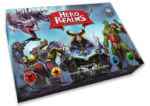 In the Hero Realms card game players alternate between playing cards to fight each other and collecting more cards to be more powerful in the future. This deckbuilder follows in the footsteps of the hugely popular Star Realms but is more than just the same game with a different theme. There are very strong similarities, but in Hero Realms players can begin with a themed starting deck (based around typical RPG character classes) and have the option of playing in a campaign game and/or fighting a specially designed communal boss monster. While Hero Realms feels very similar to Star Realms, the opportunity to play against specific boss monster decks or try out the co-op campaign game makes Hero Realms a unique experience.
In the Hero Realms card game players alternate between playing cards to fight each other and collecting more cards to be more powerful in the future. This deckbuilder follows in the footsteps of the hugely popular Star Realms but is more than just the same game with a different theme. There are very strong similarities, but in Hero Realms players can begin with a themed starting deck (based around typical RPG character classes) and have the option of playing in a campaign game and/or fighting a specially designed communal boss monster. While Hero Realms feels very similar to Star Realms, the opportunity to play against specific boss monster decks or try out the co-op campaign game makes Hero Realms a unique experience.
Hero Realms
Designer: Robert Dougherty, Darwin Kastle
Publisher: White Wizard Games
Players: 2-4
Ages: 12+
Time: 20-30 minutes
(review copy provided by publisher)
Like most deckbuilders, players start Hero Realms with a small deck of weak cards that can be used to attack or purchase upgraded cards, or both. Throughout the game players purchase additional cards for their deck, shuffling them in when they run out of cards to draw. In this way, a player’s deck of cards becomes increasingly powerful as they continues. Rather than focusing on earning points, Hero Realms (and Star Realms) focuses game play on attacking and eliminating other players (or villains.) The base Hero Realms game does not offer much new from Star Realms, but the Hero Realms system is designed to take advantage of new gaming situations. Character packs give players new (slightly improved) starting decks of cards around a central theme (like wizard, fighter, etc…) These class decks also grant players two special abilities for use during the game (one minor one and another more powerful, single use ability.) Boss Decks give one player a huge advantage such that they then play against several other players fighting as a team. Finally, an available Campaign Deck allows one or more players to cooperatively play through a series of scenarios as they follow a branching storyline.
The mechanics of Hero Realms are similar to many other deckbuilders. Players play out their hand of cards, generating money and combat as they play. This combat value can be used to attack an opponent to reduce their life total while the money gained that turn (it doesn’t accumulate) can be spent to buy new cards off a center row of five cards. Purchased cards are replaced from a central deck. These cards come in four colors, with each colors having a similar theme. Many cards grant special abilities if one or more cards of that color are already in play, this encourages players to focus on purchasing cards of one or two specific colors as they play. In addition to granting combat or monetary value, cards can have other special effects like drawing extra cards or sticking around from turn to turn (typically played cards go away at the end of every turn.) These permanent cards can be attacked separately from a player’s life total and some even must be attacked before one can attack an opponent directly. None of this is particularly new in the world of deckbuilding, but where Hero Realms begins to make a name for itself is in the possibility of cooperative or asymmetrical gameplay.
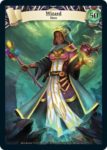
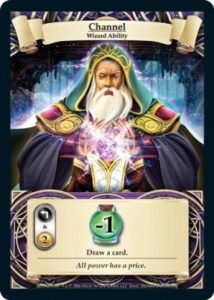
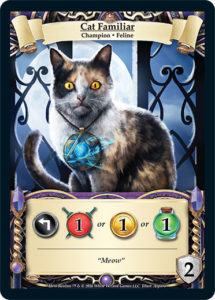
The Ruin of Thandar Campaign Deck grants players the option of playing cooperatively through a series of linked games. Players begin with a simple scenario teamed against an uncontrolled (not player controlled) opponent. The opponent takes its own turn (between each player’s turn) and plays out cards according to set rules. However, rather than purchasing additional cards as the game goes on, it uses its own custom deck with additional powers kicking in depending on the color of card it plays on its turn. If the players manage to defeat the scenario, they may then choose to follow up the story with one of two new choices that dictate their opponent for the second round. There is a third round option for each branch, bringing the total to 6 possible final confrontations. Players start each round with essentially their same starting decks although they can earn “rewards” for accomplishing previous scenarios, such as an additional starting card or a minor improvement to a special ability. The Campaign Deck comes complete with a full fledged system of deck and ability improvement for use in longer campaign games. Unfortunately, it only serves to whet one’s appetite for more content as completing the first three scenarios only serves to scratch the surface of possible player upgrades.
There are two Boss Deck options, a Lich and a Dragon, that differ from the campaign deck in that they are meant to be controlled by a player. Typically several players would gang up against one player using the custom Boss Deck. Play is similar to the standard game, but the boss player has far more powerful cards and abilities at their disposal. The Dragon and Lich decks are different and have their own unique flavor. The Lich stores its health in several Soul Jars which give off special effects and the Dragon has Treasure Horde cards which can be stolen and used by the players during the battle. There are even rules for the Dragon and Lich bosses to go head to head in a Boss vs Boss battle.
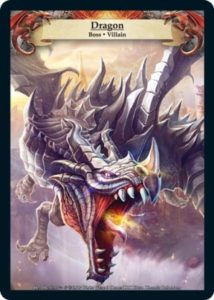
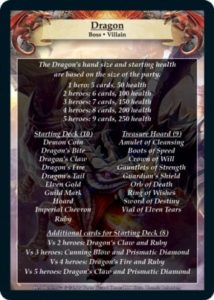
Verdict:
I enjoy a good deckbuilder and Star Realms is a great entry in the fast setup-fast playtime category. Hero Realms is similar in style such that I would normally not feel the need to own both. However, the new additions to the game (Class Decks with their special powers, Boss fights, and especially the cooperative campaign) are the type of things that raise my interest. I like the class decks enough that I wouldn’t want to play without them. Boss battles are unique experiences but I favor coop play when I can, I haven’t played either boss enough to make a firm call. (Although a Boss vs Boss would interest my power-hungry son.) My main issue with Hero Realms is a common one, the game is often over before I feel like I really get my deck going. The game ends just before I get to use all the “cool toys” I’ve been slowly gaining throughout the game. This is particularly telling in the cooperative campaign. The campaign’s opponent tends to get more powerful over time, so it is a rush to take them out before the players lose. This means short-term strategy is almost always the best option and it seems like some of the classes take much longer to really shine. The problem is increased in the campaign. Most scenarios begin with players’ initial starting decks, so they need to start upgrading all over again. Even the campaign progression is slow. While players are given small advantages for each scenario, one can look at the potential upgrades available later on (listed in the rulebook) and feel like character progression is incrementally slow. Rules (and powers) exist for at least five or six levels of improvement, and the entire Ruin of Thandar Campaign Deck manages to increase player’s level by about one. I would love to see a quicker ramp-up of power, either in-game or over the course of the campaign. As things stand, I feel like it is just minor changes. With a stronger or faster upgrade path, I would be far more tempted to play through the current campaign deck to get a feel for how each character class plays.
This may all seem rather negative (and it is) but Hero Realms remains a solid game. It’s based off a solid game engine (Star Realms) and even if I have qualms with the pace and length of the Thandar campaign deck, I still appreciate its presence and enjoy the cooperative gaming opportunities it provides. Gamers looking for an interesting cooperative deckbuilder should check it out. Powergamers may want to slip into the role of a Boss and take the fight to several frenemies at once. (Shoot, go all out with the whole Boss vs Boss fight!)
Kid Factor
Not too much here to worry about aside from complicated mechanisms and card text. I figure it shouldn’t be an issue for the typical middle school student. The art seems reasonable except for a bit of horror/demon/black magic art on the appropriate cards. I consider cooperative play to be extremely family friendly, and any son or daughter worth their salt would jump at the opportunity to play an overpowered Boss character against their parent.





Discussion Area - Leave a Comment